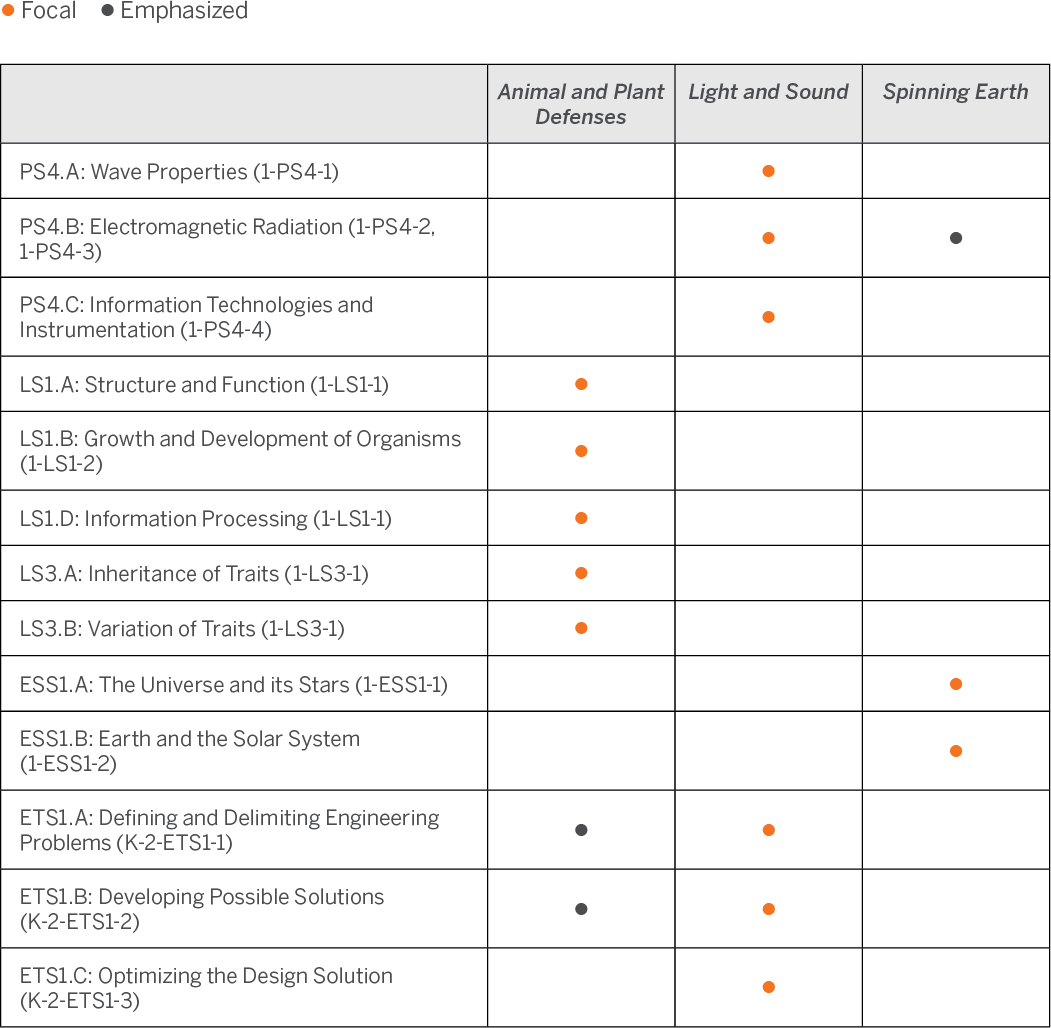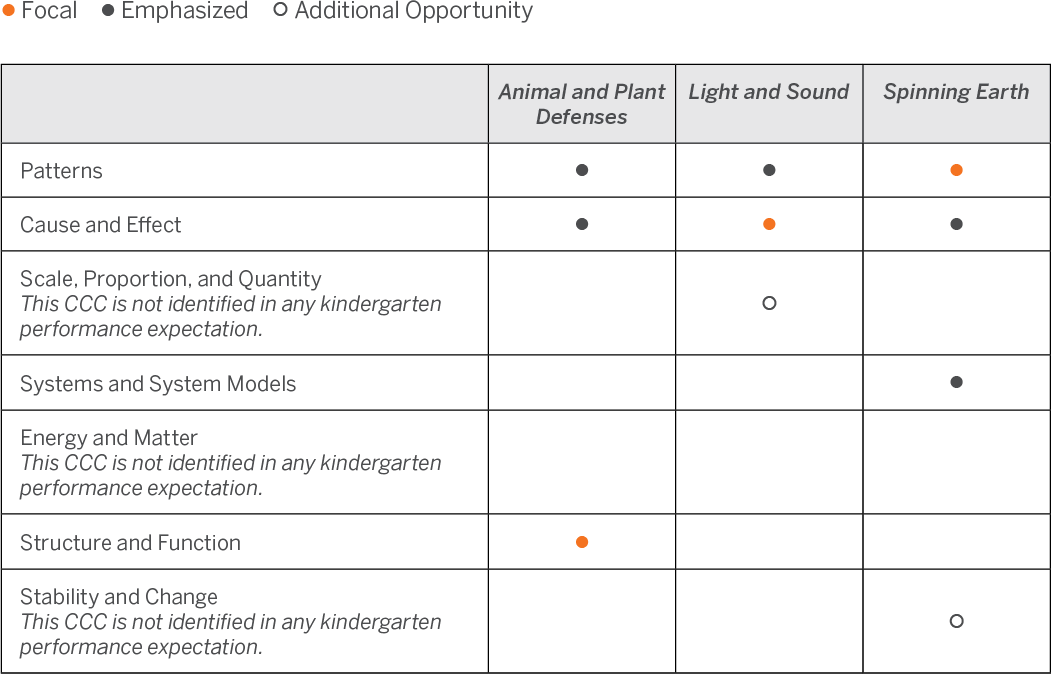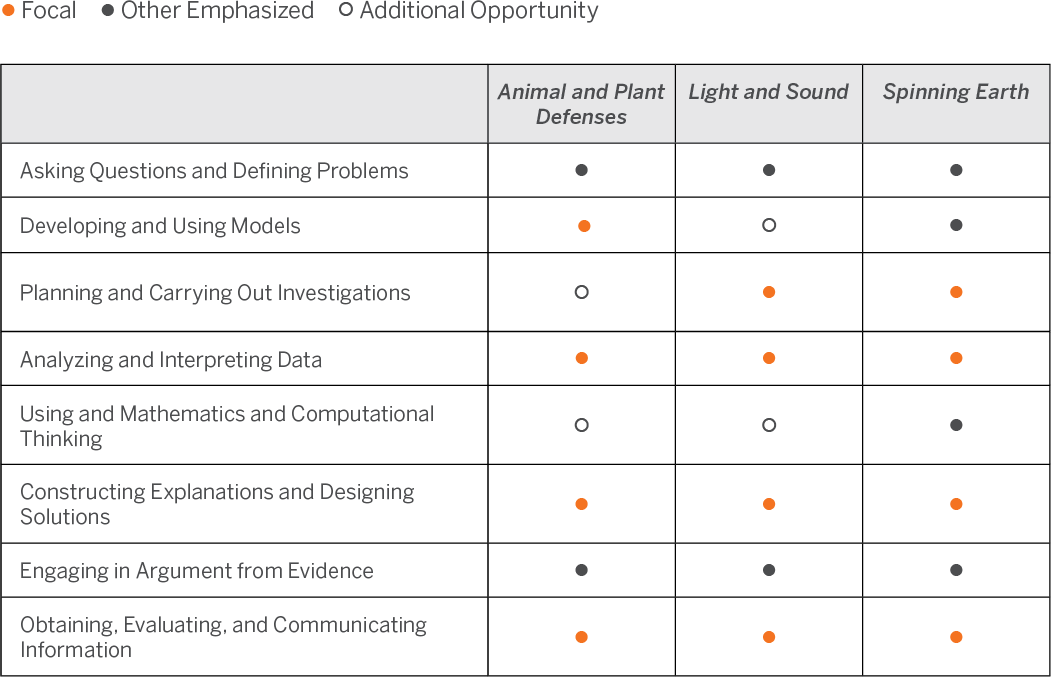Grade 1
The Amplify Science grade 1 program progressively builds students’ abilities to meet all grade-level performance expectations through a three- dimensional instructional sequence. The following is an overview of the sequence of units, a description of the progression of student learning across the year, and a summary of how the sequence meets all performance expectations for grade 1.
Sequence of units
- Animal and Plant Defenses
- Light and Sound
- Spinning Earth
Animal and Plant Defenses
- 1-LS1-1: Mimicking Organisms’ Structures
- 1-LS1-2: Parents Promote Survival of Offspring
- 1-LS3-1: Young Organisms Resemble Parents
- K-2-ETS1-1: Defining the Problem
- K-2-ETS1-2: Developing Possible Solutions
Light and Sound
- 1-PS4-1: Sound and Vibration
- 1-PS4-2: Seeing Requires Light
- 1-PS4-3: Light Interaction with Materials
- 1-PS4-4: Light and Sound for Communication
- K-2-ETS1-1: Defining the Problem
- K-2-ETS1-2: Developing Possible Solutions
- K-2-ETS1-3: Comparing Different Solutions
Spinning Earth
- 1-ESS1-1: Observable Patterns of Sky Objects
- 1-ESS1-2: Amount of Daylight
Progression and organization
The units in grade 1 were designed and sequenced to build students’ expertise with the grade-level disciplinary core ideas (DCIs), science and engineering practices (SEPs) and crosscutting concepts (CCCs) while simultaneously considering the dimensions of first graders’ language, social-emotional, and physical development across the school year. Each unit has focal SEPs and CCCs, carefully selected to support students in figuring out the unit’s focal DCIs.
Students begin the year engaging with the Animal and Plant Defenses unit and focus on how animals and plants use their body parts in different ways for survival. The focal CCC of Structure and Function supports students in understanding how the parts of an animal function to help an animal get what it needs to survive and to not get eaten. Students engage with the SEP of Developing and Using Models and build models that explain how shells, spines, and camouflage function as defenses. In the Light and Sound unit, students build on what they learned about developing and using models as they engage with the SEP of Designing Solutions to build a projection and sound effect that meet a set of design goals. The CCC of Cause and Effect supports students in understanding relationships between light sources, materials, and bright or dark surfaces, as well as the relationship between sound and vibration. In the final unit of the year, Spinning Earth, when nicer weather allows for making observations of the Sun’s position in the sky, students develop facility with planning and carrying out investigations. They also focus on the SEP of Analyzing and Interpreting Data as they organize and reorganize data to compare and understand their observations. Students use the CCC of Patterns when they analyze data to search for patterns to explain why it is daytime in some places on Earth while it is nighttime at the same time in other places on Earth.
The DCIs emphasized in each unit work together to support deep explanations of the unit’s anchor phenomenon. For example, in the Light and Sound unit, investigating light and sound in order to design a projection and sound effects for a puppet show leads students to construct ideas about Wave Properties (DCI PS4.A), Electromagnetic Radiation (DCI PS4.B ), Information Technologies and Instrumentation, (DCI PS4.C) and ETS1.A: Defining and Delimiting Engineering Problems (DCI ETS1.A), and Developing Possible Solutions (DCI ETS1.B).
Disciplinary core ideas

Crosscutting concepts

Science and engineering practices
